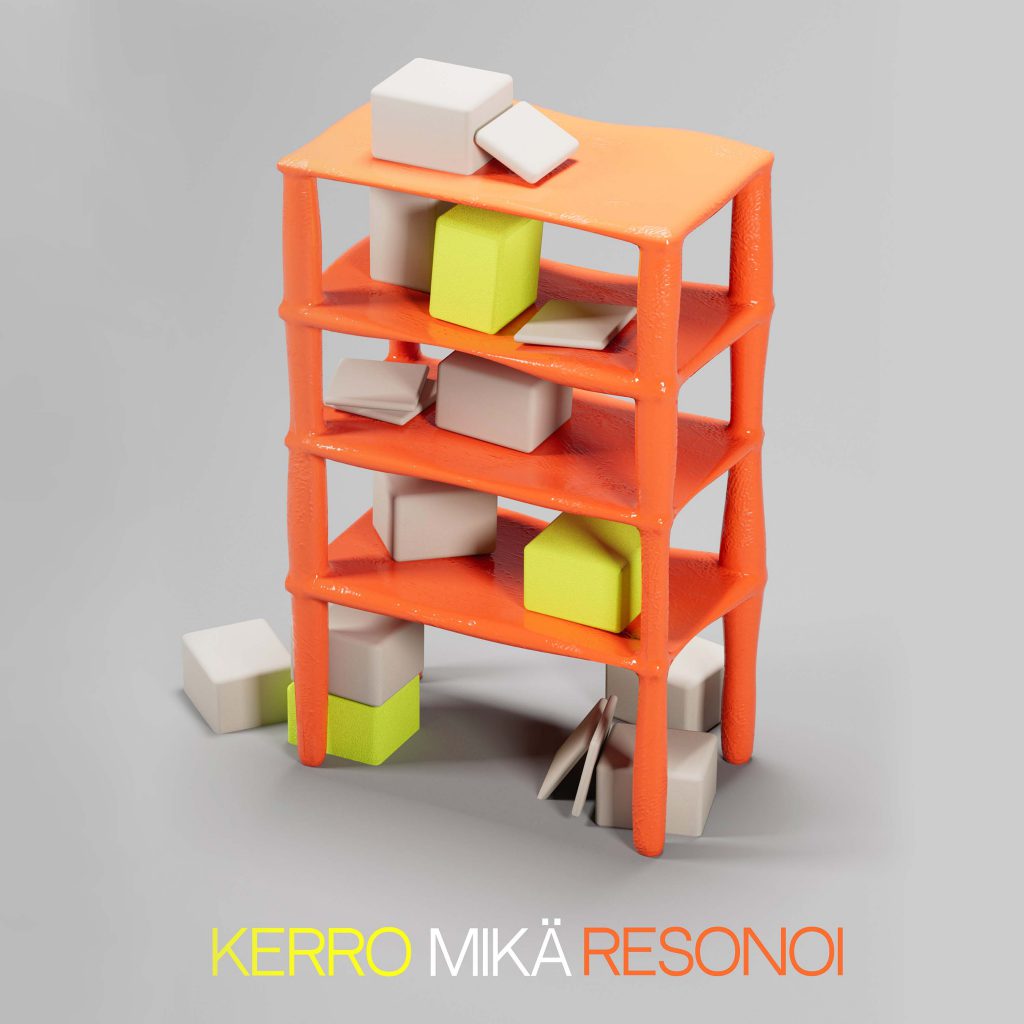
Maunula
Kannelmäki
Malmi
Otaniemi
A project by Clément Beraud, Micol Curatolo, Jussi Hertz, Laura Jurmu, Aska Mayer, Kirsi-Marja Moberg, Alice Theiler, and Sydnee Wang, MA students in Visual Culture, Curating and Contemporary Art at Aalto University.
Kerro mikä resonoi – Urban Sound Shelves re- flects through sound on the form and infras- tructures of the places we live in.
Kerro mikä resonoi – Urban Sound Shelves project creates a participatory open-source archive of the sounds of the city. It raises awareness of our environment, and con- siders urban sounds as an important part of the cultural heritage by creating space for a conscious practice of sensing the urban space. Urban soundscapes are the layers of sounds that populate a specific urban area. They are rhythms, melodies and noises produced by the city and by nature. By paying attention to urban soundscapes, we can understand how political power and cultural structures shape our lives and the places we inhabit.
Recording sounds as a way of understanding the city
Living and working close to major infrastructures, like highways, factories or ports, often means inhabiting economically accessible, but che- mically and sonically polluted, areas. Quieter neighbourhoods are associated with wealthier lifestyles, and undergo stricter social control in
the public space. Sound control affects health, imposes codes of use and behaviour, and reinforces cultural and economical inequalities.
Through the use of common tools of sound recording, like smartphones, we want to ex- pand people’s agency. In fact, listening is a simple mode of reflection and, through our open- source archive, re-using sounds can be a way to reclaim them and allow creativity.
Listening to stay present
On the other hand, being constantly immersed in sound, we tend to become inattentive to its meanings. Being exposed to sounds can cause distraction and exhaustion. Because quiet moments are rare, the soundscapes of urban areas can often be overwhelming. Even in relatively distant city forests, one can hear the humming of nearby motorways. Pausing, perhaps closing our eyes, and consciously listening to our surroundings is a way of prac- ticing mindfulness in our everyday lives. The Urban Sound Shelves project invites people to ground themselves into the present moment by exploring the source, meaning and history of urban sounds.
Archiving and sonic memory
Sounds carry emotions and awaken cultural memories. As such, they deserve to be transferred to the next generations. Through the process of collecting sounds, we create a timeline of the history of sound in the areas of Maunula, Kanneltalo, Malmi, Otaniemi and other neighbourhoods. The sound archive becomes a source of memory and a tool for further research and engagement.
Kerro mikä resonoi – Urban Sound Shelves is a project by Clément Beraud, Micol Curatolo, Jussi Hertz, Laura Jurmu, Aska Mayer, Kirsi- Marja Moberg, Alice Theiler, and Sydnee Wang, MA students in Visual Culture, Curating and Contemporary Art at Aalto University. The project is realized in collaboration with Kanneltalo Cultural Centre, Malmitalo Cultural Centre and Maunulatalo Cultural Centre. The visual identity and installation design are by Gabriel Boicel.
We invited audiovisual artist Oona Räyhäntausta to work with the audio contributions in Urban Sound Shelves archive. The audio artwork was performed at Surplus public event in Lapinlahden Lähde, Helsinki, 6.5.2022. Kerroksia – Layers

The project is realized in collaboration with Kanneltalo Cultural Centre, Malmitalo Cultural Centre and Maunulatalo Cultural Centre. The visual identity and installation design are by Gabriel Boicel.
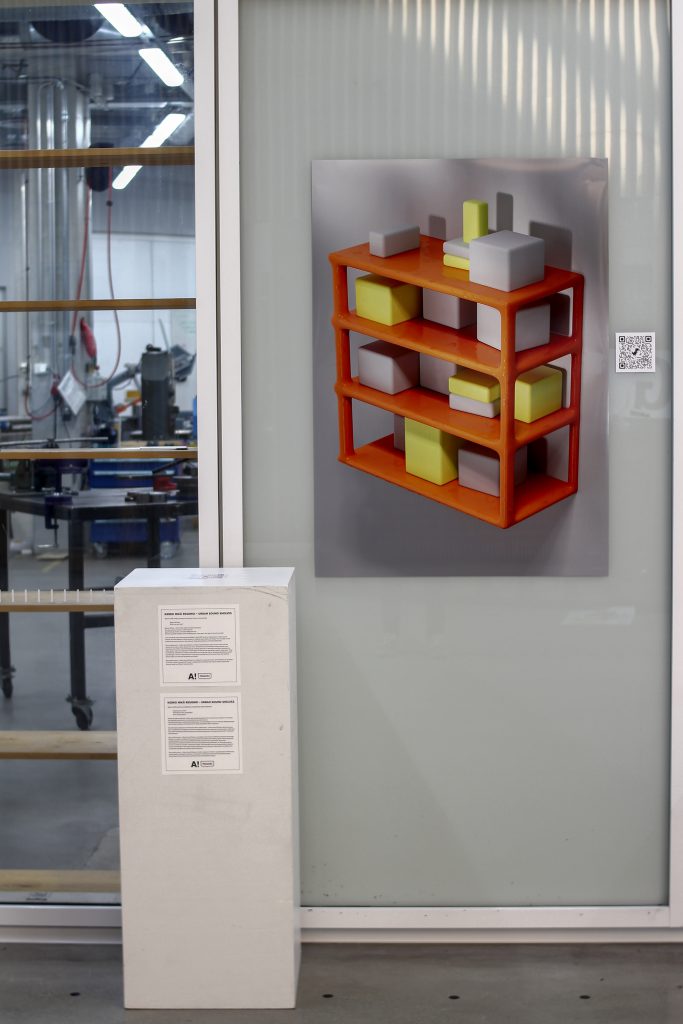
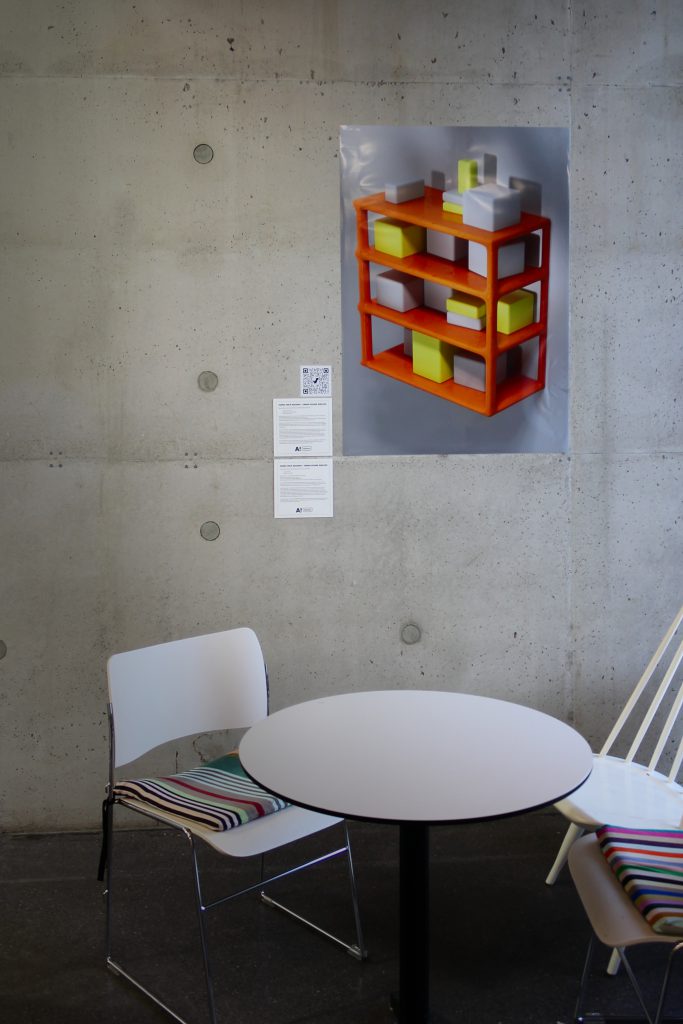
Urban Soundshelf at Maunulatalo
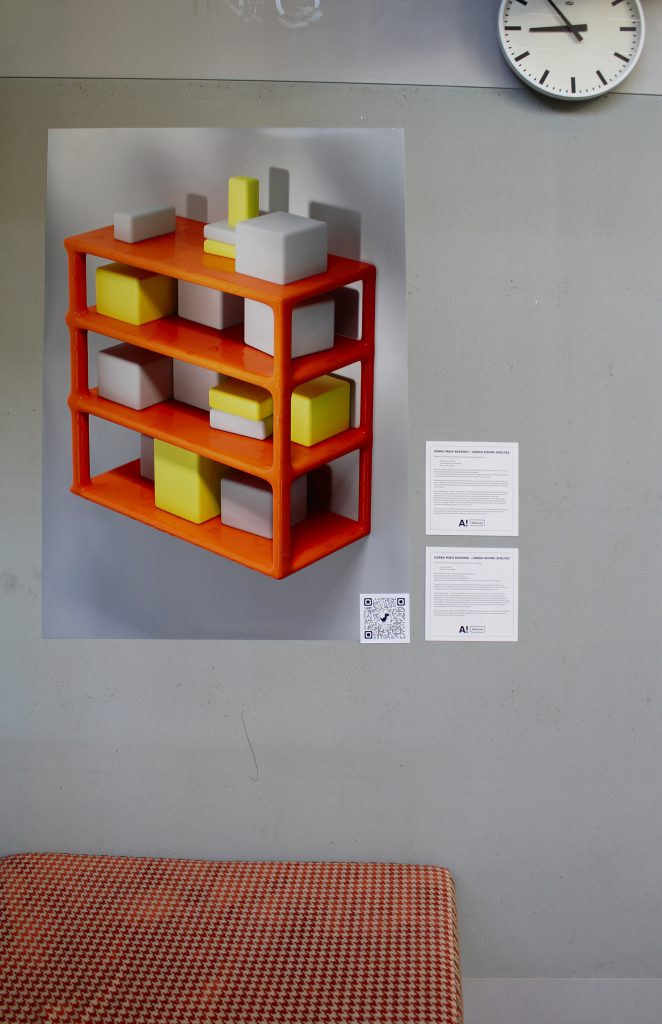
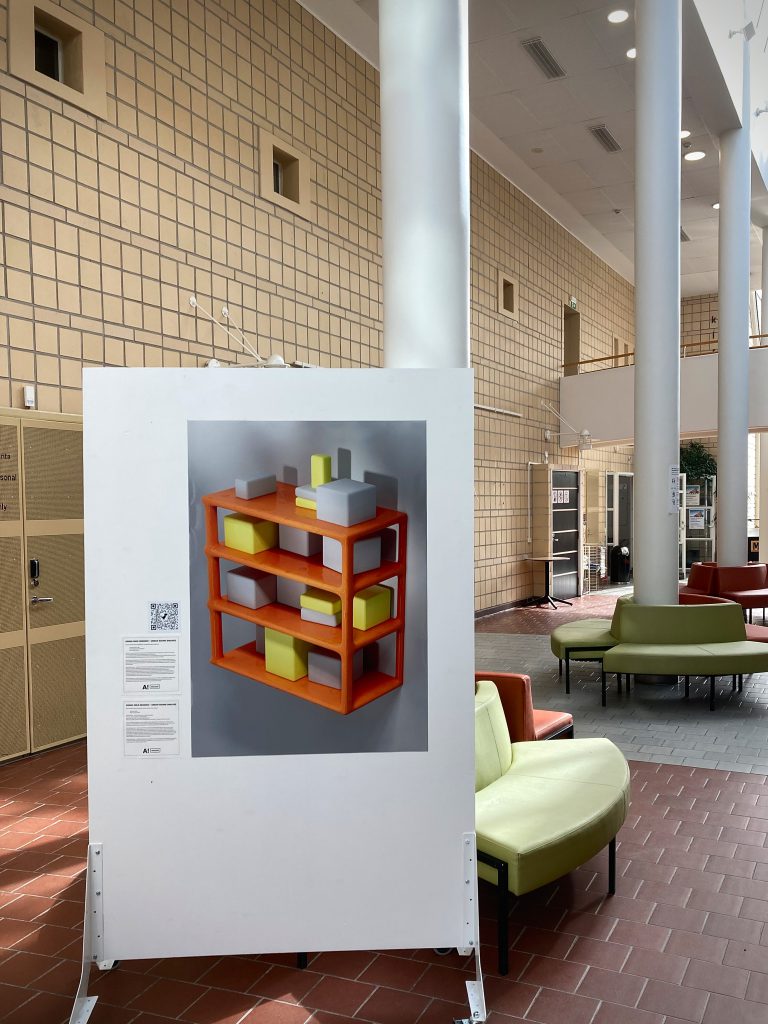
Urban Soundshelf at Kanneltalo
Urban Soudnshelf at Malmitalo
Kerro mikä resonoi

Maunula
Kannelmäki
Malmi
Otaniemi
A project by Clément Beraud, Micol Curatolo, Jussi Hertz, Laura Jurmu, Aska Mayer, Kirsi-Marja Moberg, Alice Theiler, and Sydnee Wang, MA students in Visual Culture, Curating and Contemporary Art at Aalto University.
Kerro mikä resonoi – Urban Sound Shelves re- flects through sound on the form and infras- tructures of the places we live in.
Kerro mikä resonoi – Urban Sound Shelves project creates a participatory open-source archive of the sounds of the city. It raises awareness of our environment, and con- siders urban sounds as an important part of the cultural heritage by creating space for a conscious practice of sensing the urban space. Urban soundscapes are the layers of sounds that populate a specific urban area. They are rhythms, melodies and noises produced by the city and by nature. By paying attention to urban soundscapes, we can understand how political power and cultural structures shape our lives and the places we inhabit.
Recording sounds as a way of understanding the city
Living and working close to major infrastructures, like highways, factories or ports, often means inhabiting economically accessible, but che- mically and sonically polluted, areas. Quieter neighbourhoods are associated with wealthier lifestyles, and undergo stricter social control in
the public space. Sound control affects health, imposes codes of use and behaviour, and reinforces cultural and economical inequalities.
Through the use of common tools of sound recording, like smartphones, we want to ex- pand people’s agency. In fact, listening is a simple mode of reflection and, through our open- source archive, re-using sounds can be a way to reclaim them and allow creativity.
Listening to stay present
On the other hand, being constantly immersed in sound, we tend to become inattentive to its meanings. Being exposed to sounds can cause distraction and exhaustion. Because quiet moments are rare, the soundscapes of urban areas can often be overwhelming. Even in relatively distant city forests, one can hear the humming of nearby motorways. Pausing, perhaps closing our eyes, and consciously listening to our surroundings is a way of prac- ticing mindfulness in our everyday lives. The Urban Sound Shelves project invites people to ground themselves into the present moment by exploring the source, meaning and history of urban sounds.
Archiving and sonic memory
Sounds carry emotions and awaken cultural memories. As such, they deserve to be transferred to the next generations. Through the process of collecting sounds, we create a timeline of the history of sound in the areas of Maunula, Kanneltalo, Malmi, Otaniemi and other neighbourhoods. The sound archive becomes a source of memory and a tool for further research and engagement.
Kerro mikä resonoi – Urban Sound Shelves is a project by Clément Beraud, Micol Curatolo, Jussi Hertz, Laura Jurmu, Aska Mayer, Kirsi- Marja Moberg, Alice Theiler, and Sydnee Wang, MA students in Visual Culture, Curating and Contemporary Art at Aalto University. The project is realized in collaboration with Kanneltalo Cultural Centre, Malmitalo Cultural Centre and Maunulatalo Cultural Centre. The visual identity and installation design are by Gabriel Boicel.
We invited audiovisual artist Oona Räyhäntausta to work with the audio contributions in Urban Sound Shelves archive. The audio artwork was performed at Surplus public event in Lapinlahden Lähde, Helsinki, 6.5.2022. Kerroksia – Layers
The project is realized in collaboration with Kanneltalo Cultural Centre, Malmitalo Cultural Centre and Maunulatalo Cultural Centre. The visual identity and installation design are by Gabriel Boicel.
Urban Soundshelf at Väre
(Aalto-University)

Urban Soundshelf at Maunulatalo

Urban Soundshelf at Kanneltalo

Urban Soudnshelf at Malmitalo

